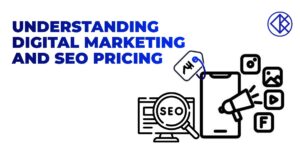Introduction: In the digital age, where consumers turn to search engines for answers, Search Engine Marketing (SEM) has become an indispensable tool for businesses seeking to enhance their online visibility and drive targeted traffic. This blog serves as a comprehensive guide to understanding SEM, unraveling its components, and providing actionable insights to harness the full potential of this dynamic digital marketing strategy.
Table of Contents:
- Introduction to SEM:
- Defining Search Engine Marketing.
- Differentiating between SEO and SEM.
- The symbiotic relationship between SEM and paid advertising.
- Components of SEM:
- Pay-Per-Click (PPC) advertising.
- Search engine optimization (SEO).
- Local search optimization.
- Social media advertising.
- The Importance of Keywords:
- Conducting thorough keyword research.
- Choosing the right keywords for your business.
- Utilizing long-tail keywords for specificity.
- PPC Advertising with Google Ads:
- Creating targeted ad campaigns.
- Understanding Quality Score and Ad Rank.
- Budgeting and bidding strategies.
- Ad Extensions and Formats:
- Utilizing ad extensions for additional information.
- Choosing the right ad formats (text ads, display ads, shopping ads).
- Enhancing ad visibility with sitelinks, callouts, and structured snippets.
- Local Search Optimization:
- Setting up and optimizing Google My Business.
- NAP (Name, Address, Phone number) consistency.
- Localized content and geo-targeted campaigns.
- SEO and SEM Synergy:
- Integrating paid and organic strategies for maximum impact.
- Using SEO insights to inform PPC campaigns.
- The role of content in both SEO and SEM.
- Conversion Tracking and Analytics:
- Implementing conversion tracking tools.
- Monitoring key performance indicators (KPIs).
- Analyzing data to refine and optimize campaigns.
- Remarketing and Audience Targeting:
- Leveraging remarketing for audience re-engagement.
- Creating custom audiences for precise targeting.
- Utilizing demographic and behavioral data for audience segmentation.
- Staying Ahead of SEM Trends:
- Voice search optimization.
- The impact of artificial intelligence on SEM.
- Emerging trends in mobile search.
Conclusion: Search Engine Marketing is a dynamic and ever-evolving strategy that can significantly impact your online presence and business success. By strategically implementing PPC advertising, optimizing for local searches, and aligning your SEM efforts with SEO, you can create a robust digital marketing strategy that reaches your target audience effectively. As you navigate the world of SEM, stay informed about industry trends, adapt to changing algorithms, and watch as your brand rises to the top of search engine results, capturing the attention of your ideal customers.





